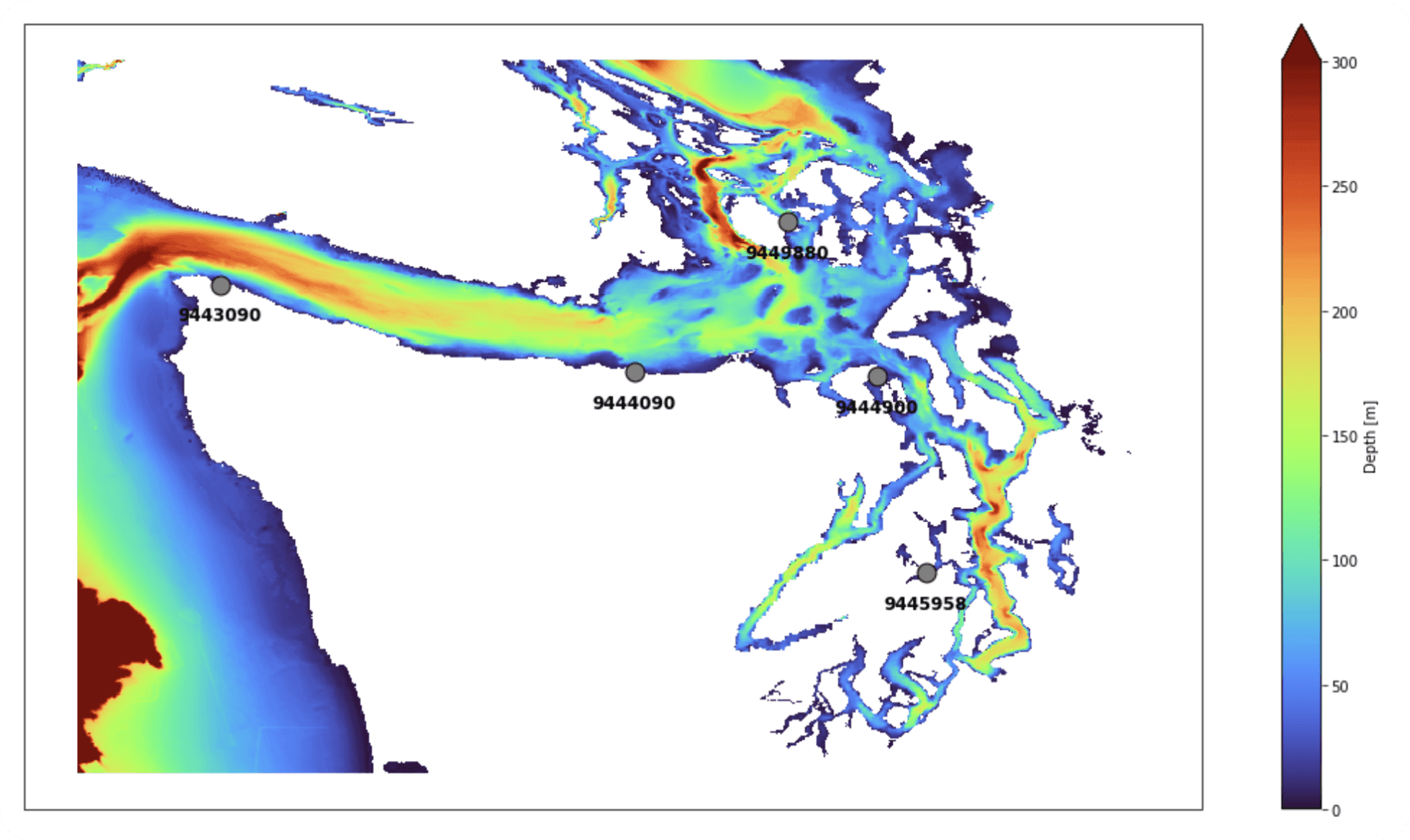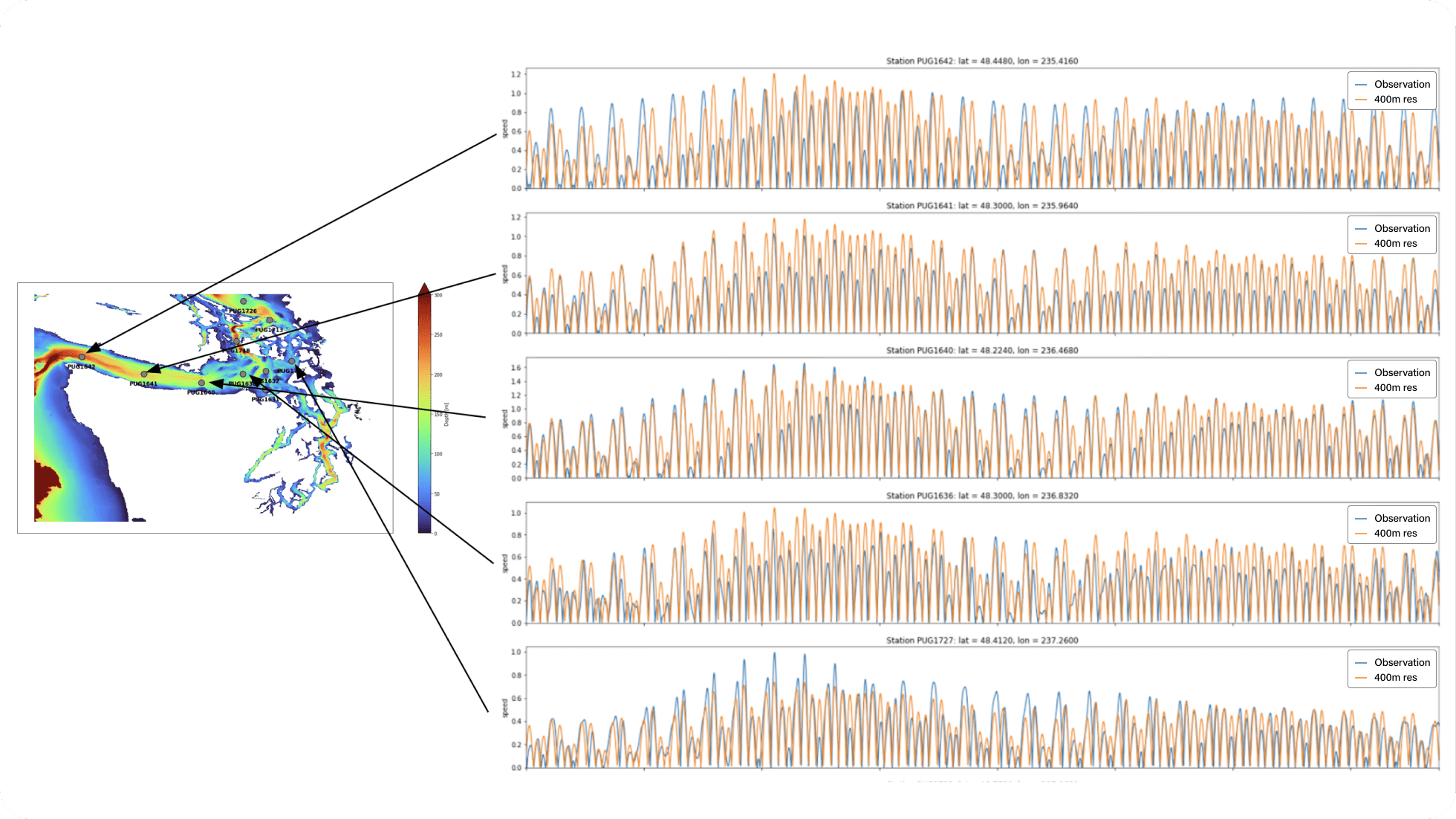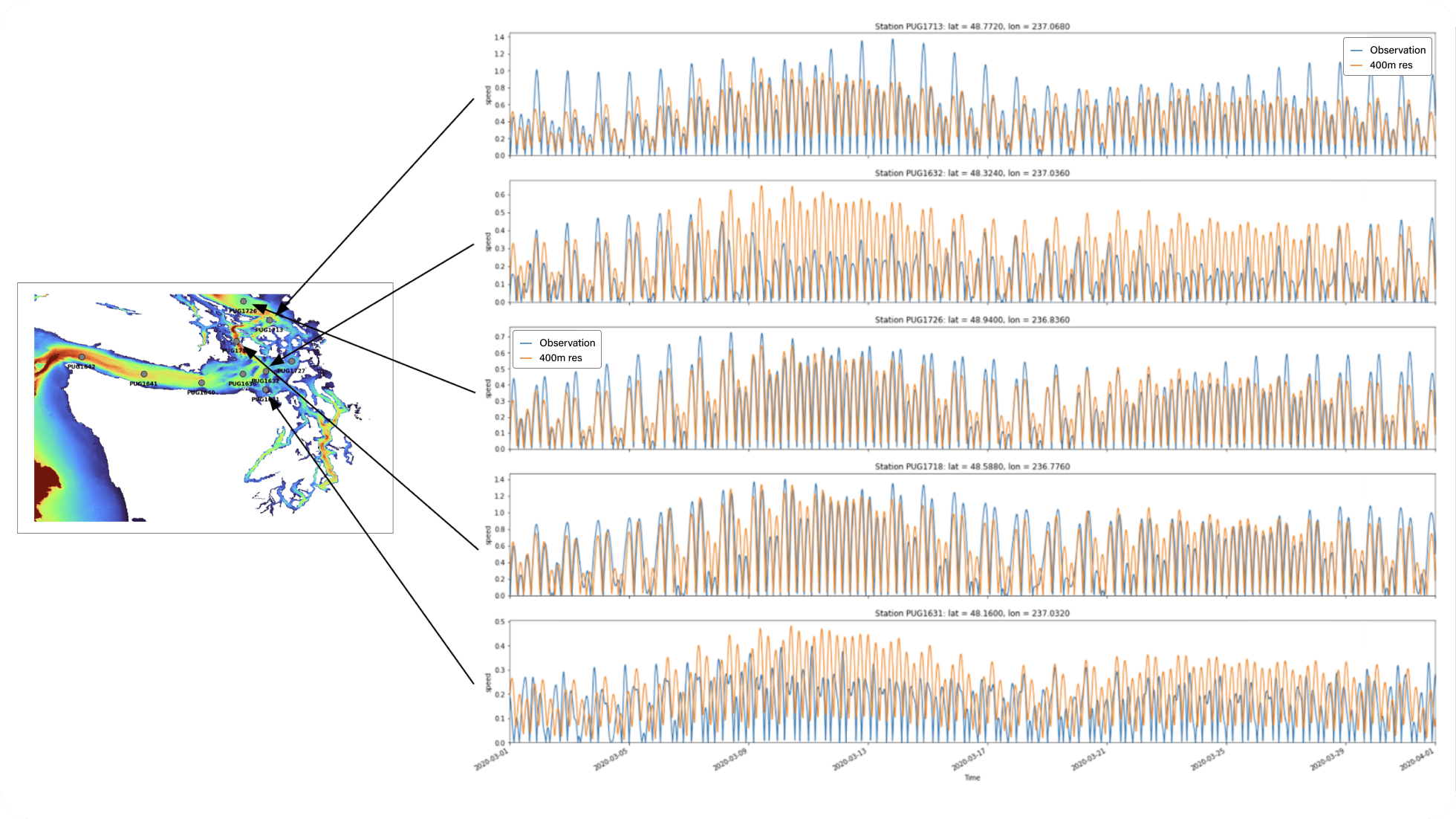Pugent Sound Tides
Spectral model validation.
Tidal Elevations

Tide stations over the model bathymetry

Tidal Currents

Current meter sites over the model bathymetry


The observational data are derived from harmonic constituents.
For elevation, the comparison is very good near the entrance but degrades a little with distance inside the harbour - particularly at the complex areas. Here, the 400m resolution model overpredicts the amplitudes, which is likely due to 100m resolution effects (e.g. friction) not fully considered plus extra constituents (e.g., J1 and SA) beyond the 14 used in the 400m resolution model. However, the timing of high and low tide is being well represented throughout the domain.
There will likely be areas with a strong rotational component where the flow regime changes over very small distances, not perfectly resolved at 400 m scales nor without the full 100m resolution and constituents.
At locations where the flows are geographically constrained (e.g. PUG1718), the measured and modelled flows are nicely correlated in both phase and amplitude.
At some open water sites (e.g. PUG1632) the phase aligns well but the amplitudes do not. At others there is an offset (e.g PUG1713, PUG1631) which might indicate the model is predicting a rotational flow while the observations do not. Both may be due to spatial complexity in the flow regime, with adjacent model data points possibly being more representative. This has not been tested, but we note that deep within the Sound (PUG1726), a complex tidal flow asymmetry is almost perfectly replicated. This provides a lot of confidence in the general efficacy of the model.
Conclusion: The 400m resolution model makes a surprising good replication of the tidal dynamics of the Sound. The data should be fit for purpose in a recreational or navigation guidance use case, where the spatial patterns are being interpreted and the timing of flow reversals are important. For detailed scientific predictions however, more analysis would be required to quantify the model efficacy and define limitations on its use.